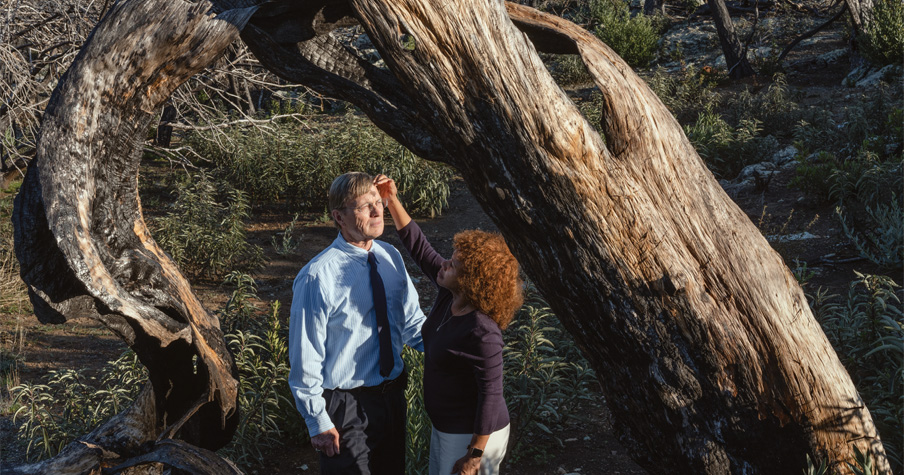
Photo by Lucas Foglia. Chris and Rolawn Rehmann participate in the first Ash Wednesday service after the deadly Camp Fire burned through their rural community of Paradise, California.
Christians who celebrate the liturgical season of Lent begin it with Ash Wednesday in a solemn service that includes congregants receiving ashes in the shape of a cross on their foreheads – a physical reminder that we are “dust, and to dust we shall return.” The Lenten season that follows brings a time of fasting, prayer, and repentance into the Christian calendar, giving people a time to reflect and prepare for the joy of Easter.
Ashes have been used for centuries to mark grief. And while grief and repentance both are present during Lent, there also is expectation of a coming joy. The ashes are made by burning the palm branches that were used for the previous year’s Palm Sunday, that celebratory moment recalling Christ’s triumphal entry into Jerusalem before His death. The ashes symbolize humanity’s mortality, and the Lenten season prepares us for the hope of the resurrection.
That duality of grief and joy can be difficult to wrestle with, and the image of ash a painful reminder, notably for those who have seen lives and property destroyed by fire.
In Southern California, where fire ravaged neighborhoods and burned thousands of acres, the grief – and the sense of mortality – can be overwhelming.
For those who have lived in regions where fire danger is an always present reality, the sight of ashes can create a visceral reaction. Wildfires move at the will of the wind, following the fuel until conditions change. The result can be chaotic, surreal, and devastating. In an urban area, the devastation can take years to rebuild.
In forest land, the aftermath of a fire is often more noticeable. The fire incubates growth by breaking down organic matter to provide fertile soil for new growth. The result isn’t just proverbial: Out of ashes comes life. – The Editors